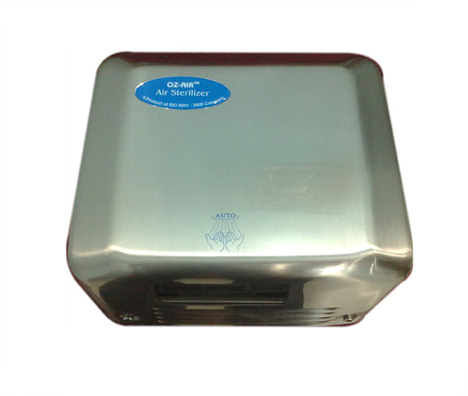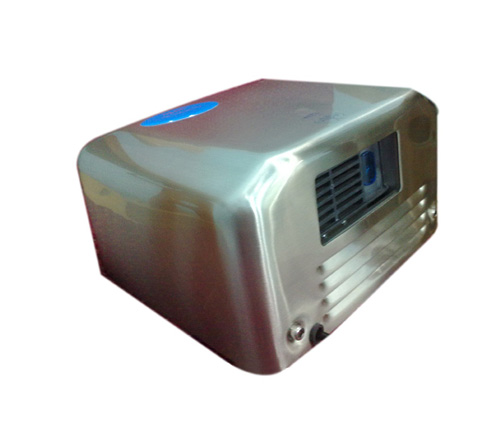
Hygiene conditions have become an important feature in today's business world, especially when we talk about industries where health and safety might be of concern. The Hand Sterilizer from Creative OZ AIR is an efficient and reliable hand sanitization tool, providing businesses not just with a clean environment but also a safe space for employees, customers and visitors.
The Hand Sterilizer kills bacteria, viruses, and other harmful germs properly so that the employees and visitors can keep their hands clean in a hygiene manner. This aspect is more critical in healthcare, food processing, and manufacturing industries.
One of the best ways of controlling the spread of germs and cross-contamination in shared spaces is through hand sterilization. Whenever Hand Sterilizers are put at strategic points within a business like at entry points, break rooms, and workstations, the chances of infections happening within an organization reduce, and thus there is a safer place to work in.
Most firms operating today are very regulated on hygiene and safety levels. A Hand Sterilizer finds a great use in such organizations because it allows them to achieve such requirements through the efficient means of maintaining hand hygiene.
It safeguards the workers in an organization, and at the same time, it ensures that an organization is not breaking other laws attributed to non-compliance with such requirements.
The hand sterilizer is a very easy-to-use product designed for heavy-flow facilities that want to have places where rapid high-capacity sterilization is required. It has minimal touchpoints, thus minimizing chances of contamination and assuring an effortless hygiene experience for users.
Hospitals, clinics or any other place for medical purposes is required to be sanitized. The work ensures that every practitioner and patient moves around with a clean hand making it as less infected possible, hence, putting hygiene at top.
In food processing industries, hygiene is of utmost importance as it prevents contamination. The Hand Sterilizer will be able to operate in all scenarios and help food processing plants, kitchens or restaurants maintain strict hygiene conditions during the manipulation of their products.
In a manufacturing and logistics environment, where large groups have to share working space and handle material, this Hand Sterilizer minimizes the spreading of germs and provides a clean, safe environment for working.
Creative OZ AIR Hand Sterilizer is an essential product for businesses seeking the proper hygiene and safety of their work environment. Be it health facilities, food processing industries, or manufacturing units, this sanitizer works to ensure proper hand hygiene among employees and other visitors goes a long way in preventing infections, and saves companies from non-compliance. For all businesses trying to make a place germ-free and safe, the Hand Sterilizer is a sure investment that will not be missed.


A hand sterilizer is a product or device used to reduce the number of pathogens on the hands, making them cleaner and less likely to spread infections.
Hand sterilizers typically work by using an active ingredient, such as alcohol, to kill or inhibit the growth of bacteria, viruses, and other microorganisms on the skin.
Common types include Ozone based hand sanitizers, antiseptic wipes, hand sterilizer stations, UV hand sterilizers, and hand sterilizer sprays.
Hand sterilizer should be used when soap and water are not readily available or as an additional measure after washing hands. It's especially important to use hand sterilizer before and after handling food, after using the restroom, after coughing or sneezing, and before touching your face.
Apply a sufficient amount of hand sterilizer to cover all surfaces of your hands. Rub your hands together until the sanitizer has evaporated and your hands are dry. Make sure to cover all areas, including between fingers and around nails.
Ozone based hand sanitizers are effective against a wide range of bacteria and viruses.
Avoid using hand sterilizers on visibly dirty or greasy hands, as they may not be as effective. Also, be aware that overuse of hand sanitizers can lead to dryness or irritation of the skin. If irritation occurs, consider using a moisturizer after applying hand sanitizer.
The effect of hand sterilizer is temporary and typically lasts until your next exposure to pathogens. It's essential to continue practicing good hand hygiene habits, including regular hand washing, to maintain cleanliness and prevent the spread of infections.